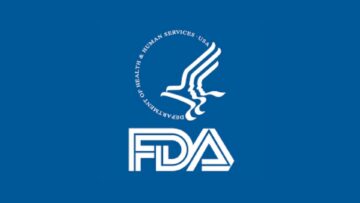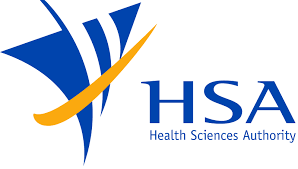The new article highlights the aspects related to the voluntary consensus standards recognized by the authority, and also to the overlap of the two different regulatory frameworks.

Table of Contents
The Food and Drug Administration (FDA or the Agency), the US regulating authority in the sphere of healthcare products, has published a guidance document dedicated to medical x-ray imaging devices in the context of conformance with IEC standards. The document provides additional clarifications regarding the applicable regulatory requirements, as well as recommendations to be taken into consideration in order to ensure compliance thereto. At the same time, provisions of the guidance are non-binding in their legal nature, nor are intended to introduce new rules or impose new obligations. Moreover, the authority explicitly states an alternative approach could be applied, provided such an approach is in line with the existing regulatory framework and has been agreed with the authority in advance.
Avoidance of Duplication
First of all, the authority acknowledges the concerns existing within the industry with regard to potential overlap of the requirements imposed under the different frameworks: the one for medical devices and EPRC regulations – if the product in question is an electronic product that is a medical device, both of them will be applicable. In order to address the said overlap, the authority has issued respective guidance documents.
Scope
The authority further clarifies that the scope of medical devices recommendations provided therein applies to. According to the document, it covers diagnostic x-ray imaging systems and their major components subject to regulation under 21 CFR 1002.1 and 21 CFR 1020.30(a)(1)). Under the existing risk-based classification system, these products are Class I or II medical devices. The applicable product codes include, inter alia, the following ones: EHD, MUH, EAP, KGI, IZI, KPW, IZW, IZX, IXK, and others.
The FDA also mentions some of the products covered by the scope of the present guidance are actually hybrids constituting a combination of more than one imaging component. As explained by the authority, if at least one of the components is subject to compliance with an EPRC standard, the approach described herein will be applicable to such a component. At the same time, it is explicitly stated that this guidance does not address radiation therapy products because there are no EPRC performance standards promulgated for these products; these devices are cleared for the market through the 510(k) process.
The guidance further outlines the list of standards it covers in order to avoid duplication and ensure the efficiency of the regulatory processes and procedures related to submissions for x-ray imaging devices.

Regulatory Policy: Key Points
With respect to the regulatory approach to be applied, the authority states that conformance to certain IEC standards would provide, at a minimum, the same level of protection of public health and safety from electronic radiation as certain EPRC performance standards. Thus, the authority recommends medical device manufacturers to demonstrate compliance with the respective standards described in the guidance. The FDA additionally emphasizes that conformance must be to a version, including corrigenda and amendments, of the applicable IEC standards that are recognized by the FDA at the time conformance is declared. With respect to the use of FDA-recognised voluntary consensus standards, the authority refers to a separate guidance document dedicated to the matter.
Performance Standards for Electronic Products
The authority starts by describing the IEC standards to be applied with respect to diagnostic x-ray systems. A party will have to demonstrate compliance thereto by submitting the appropriate declaration of conformity. In such a way, certain requirements set forth by the respective regulations (namely, 21 CFR 1020.30, 1020.31, 1020.32, and 1020.33) would be satisfied.
At the same time, it is also important to mention that certain important questions are not properly addressed by the said standards or are not entirely covered. With regard to such matters, the authority explicitly states that the fulfillment of the respective regulatory requirements cannot be performed by the virtue of demonstrating compliance with any of the applicable standards, so conformance with the IEC standards itself would not be sufficient.
Apart from the above, the document also mentions the difference that exists in the interpretation of extra-oral and intra-oral systems in the applicable regulations and standards.
510(k) Clearance
Under the general rule, when applying for marketing approval under the 510(k) premarket notification framework, a party responsible for a medical device should establish substantial equivalence to a similar medical device already placed on the market (predicate), provided such a predicate is not subject to a premarket approval application (PMA) requirements. For this purpose, medical device manufacturers should demonstrate that the new product subject to review has the same intended use, and technological characteristics that either: are the same, or; are different, but the differences do not raise different questions of safety and effectiveness that the predicate. According to the guidance, conformance to the applicable standards could be beneficial when establishing substantial equivalence. Furthermore, it is also stated that medical device manufacturers may submit a declaration of conformity to the respective voluntary consensus standards instead of providing complete test reports in order to address specific matters covered by the said standards.
In summary, the present FDA guidance describes the approach to be applied by medical device manufacturers with respect to products that are both medical devices and electronic products. By the virtue of the document, the authority explains how the overlap of the two regulatory frameworks should be addressed, and also highlights the key points to be considered when determining the applicability of voluntary consensus standards.
Sources:
How Can RegDesk Help?
RegDesk is a holistic Regulatory Information Management System that provides medical device and pharma companies with regulatory intelligence for over 120 markets worldwide. It can help you prepare and publish global applications, manage standards, run change assessments, and obtain real-time alerts on regulatory changes through a centralized platform. Our clients also have access to our network of over 4000 compliance experts worldwide to obtain verification on critical questions. Global expansion has never been this simple.
Want to know more about our solutions? Speak to a RegDesk Expert today!
- SEO Powered Content & PR Distribution. Get Amplified Today.
- Platoblockchain. Web3 Metaverse Intelligence. Knowledge Amplified. Access Here.
- Source: https://www.regdesk.co/fda-guidance-on-x-ray-imaging-devices-applicable-standards-and-regulatory-overlap/
- 1
- a
- About
- above
- access
- According
- actually
- Additional
- Additionally
- address
- administration
- advance
- agency
- All
- already
- alternative
- amendments
- and
- applicable
- Application
- applications
- applied
- Applying
- approach
- appropriate
- approval
- article
- aspects
- assessments
- authority
- avoid
- because
- beneficial
- cannot
- centralized
- certain
- change
- Changes
- characteristics
- class
- classification
- classification system
- clients
- Codes
- combination
- Companies
- complete
- compliance
- component
- components
- Concerns
- Consensus
- consideration
- considered
- context
- could
- covered
- covers
- critical
- dedicated
- demonstrate
- demonstrating
- described
- determining
- device
- Devices
- difference
- differences
- different
- document
- documents
- drug
- effectiveness
- efficiency
- either
- Electronic
- ensure
- entirely
- establish
- establishing
- existing
- exists
- expansion
- expert
- experts
- explained
- Explains
- fda
- following
- food
- Food and Drug Administration
- Framework
- frameworks
- from
- fulfillment
- further
- Furthermore
- General
- Global
- global expansion
- Health
- healthcare
- help
- highlights
- holistic
- How
- HTTPS
- Imaging
- important
- impose
- imposed
- in
- include
- Including
- industry
- information
- instead
- Intelligence
- interpretation
- introduce
- Issued
- IT
- itself
- Key
- Know
- Legal
- Level
- Line
- List
- major
- manage
- management
- management system
- Manufacturers
- Market
- Marketing
- Markets
- Matter
- Matters
- max-width
- medical
- medical device
- medical devices
- mentions
- minimum
- more
- namely
- Nature
- network
- New
- new product
- notification
- obligations
- obtain
- ONE
- order
- Others
- outlines
- party
- performance
- Pharma
- platform
- plato
- Plato Data Intelligence
- PlatoData
- points
- policy
- potential
- Prepare
- present
- procedures
- process
- processes
- Product
- Products
- properly
- protection
- provide
- provided
- provides
- providing
- public
- public health
- publish
- published
- purpose
- question
- Questions
- Radiation
- raise
- real-time
- recognized
- recommendations
- recommends
- refers
- regarding
- Regulation
- regulations
- regulatory
- related
- Reports
- Requirements
- respective
- responsible
- review
- Rule
- rules
- Run
- Safety
- Said
- same
- satisfied
- scope
- separate
- set
- should
- similar
- Simple
- So
- Solutions
- some
- Sources
- speak
- specific
- standard
- standards
- starts
- stated
- States
- subject
- Submissions
- submit
- substantial
- such
- sufficient
- SUMMARY
- system
- Systems
- technological
- test
- The
- their
- therapy
- therein
- Through
- time
- Title
- to
- under
- us
- use
- Verification
- version
- will
- within
- worldwide
- would
- x-ray
- zephyrnet












